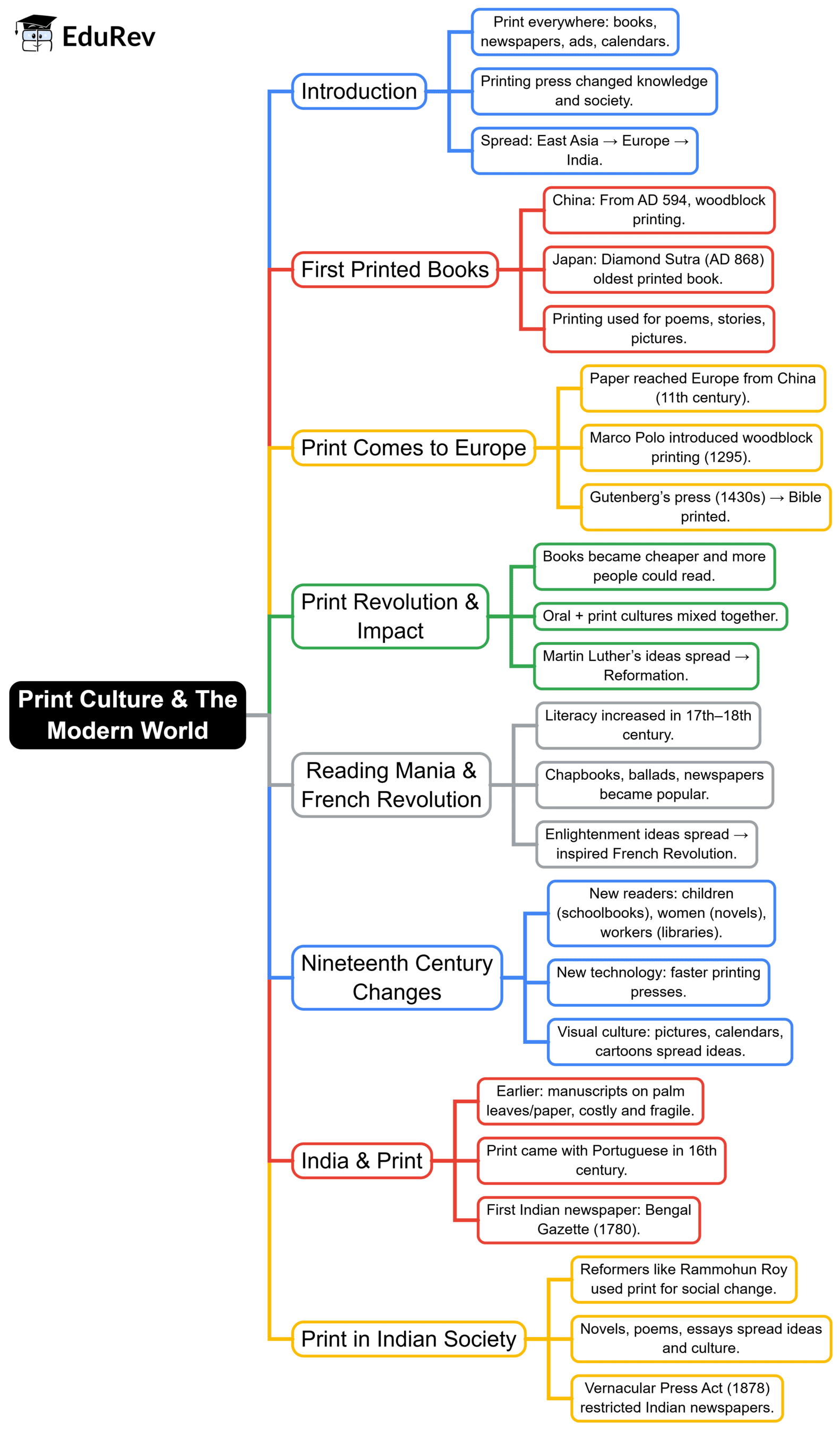Class 10 Exam > Class 10 Notes > Social Studies (SST) Class 10 > Mind Map: Print Culture & the Modern World
Mind Map: Print Culture & the Modern World | Social Studies (SST) Class 10 PDF Download

The document Mind Map: Print Culture & the Modern World | Social Studies (SST) Class 10 is a part of the Class 10 Course Social Studies (SST) Class 10.
All you need of Class 10 at this link: Class 10
|
88 videos|630 docs|79 tests
|
FAQs on Mind Map: Print Culture & the Modern World - Social Studies (SST) Class 10
| 1. What is print culture and how did it influence society? |  |
Ans.Print culture refers to the system of publishing and disseminating written works through printed materials such as books, newspapers, and pamphlets. It significantly influenced society by promoting literacy, disseminating new ideas, and facilitating the spread of information. The rise of print culture played a crucial role in the Reformation, the Enlightenment, and the spread of nationalism, as it allowed for the sharing of diverse perspectives and challenged traditional authority.
| 2. How did the invention of the printing press impact the accessibility of knowledge? |  |
Ans.The invention of the printing press revolutionized the accessibility of knowledge by allowing for the mass production of books and written materials. Prior to its invention, books were manually copied, making them expensive and rare. The printing press enabled quicker and cheaper production, leading to an increase in the availability of literature and educational materials. This democratization of knowledge fostered greater literacy rates and encouraged critical thinking among the populace.
| 3. What role did print culture play in the spread of nationalism? |  |
Ans.Print culture played a vital role in the spread of nationalism by providing a platform for the dissemination of nationalist ideas and sentiments. Newspapers, pamphlets, and books helped to unify people sharing a common language and culture, fostering a sense of identity and belonging. As these materials spread across regions, they contributed to the development of national consciousness and mobilized populations around nationalist movements.
| 4. In what ways did print culture contribute to social reforms? |  |
Ans.Print culture contributed to social reforms by raising awareness about social issues and injustices. Writers, activists, and reformers utilized print media to advocate for changes in areas such as education, women's rights, and labor conditions. The circulation of reformist ideas through books and newspapers not only informed the public but also galvanized movements aimed at achieving social progress and legislative changes.
| 5. How did the transition from oral to print culture affect communication? |  |
Ans.The transition from oral to print culture transformed communication by shifting from a primarily spoken word to a written word. Oral traditions relied on memory and personal storytelling, while print culture allowed for the preservation and dissemination of fixed texts. This shift enabled more precise communication, greater record-keeping, and the ability to revisit and analyze information, ultimately leading to a more informed society and the development of critical discourse.
Related Searches






















